Last month, Kevin Smith explained in detail the work of Weta Digital on Zack Snyder’s Justice League. Today he comes back with a completely different genre, Godzilla vs Kong.
Edwina Ting is working as animator for over 15 years. She joined the teams of Weta Digital in 2010 and worked on many movies such as The Adventures of Tintin: The Secret of the Unicorn, War for the Planet of the Apes, Rampage and Avengers: Endgame.
Stephen Tong has been working in visual effects for over 20 years. He worked for many years at DNEG before joining Weta Digital in 2018. He has worked on films such as John Carter, Man of Steel, Mortal Engines and Zack Snyder’s Justice League.
How was the collaboration with VFX Supervisor John ‘D.J.’ DesJardin?
I loved working with DJ and Tamara as well. The whole client side VFX team were great to work with. It was a pretty relaxed show. It was my first go-around with DJ, but once he felt us out and we had built up a little trust, he was super collaborative and willing to let us do some heavy lifting creatively.
How did you come up with Kong’s morning routine? Was there particular inspiration – and was it fun for the animators?
The basic outline of the scene came from the client, then our Animation Supervisor Dave Clayton went onto the MoCap stage with our mocap performer Allan Henry and fleshed it out. We like to shoot takes long and do different performances—just like you would on set—so the client can put it into the Avid and decide where to take it. That feeds back to us, and we can do another pass taking into account the more specific client notes. I love it because it lets everyone be more creative, and it’s generally where the magic happens. The moment where Kong scratches his butt? No one is going to ask for that, but it just happened as a spur of the moment idea and was so good that the client ran with it.
I think the inspiration was that we’re all getting older and could totally relate to the idea of getting up early in the morning, again, and going to ‘work’ throwing trees at the ceiling, again. Who hasn’t had those feels in the morning?
The movie is taking us inside the Earth. How did you work with the art department to design it?
Like anything else, we get concept art and notes from the client, then work towards a result using that information partially as a leaping off point and partially as a guide. Adam had a solid idea of how he wanted Hollow Earth to feel, making it much easier for us.
Can you elaborate about the FX work when Kong and the heroes enter the vortex?
VFX Producer Kevin Sherwood, Animation Supervisor Dave Clayton, and I all spent some time on set when the production was shooting in the Gold Coast, Australia. While we were there and getting to know the clients, DJ and I were talking about our shared love of old movies and old-school VFX because Adam Wingard wanted to a homage to 2001: A Space Odyssey for the portal shots as our heroes made the jump to hollow Earth. We discussed how Doug Trumbull had done some of those practical effects, and I said, “why don’t we just do a modern version of the slit-scan for the background of those shots?” DJ loved the idea, so when we got back to Weta, I researched the technical aspects of how they did it. I even found code online that someone had written to extract the original images fed into the slit-scan from the film footage.
I made a setup in Nuke that approximated how it all worked and used the found footage to make sure I was getting the correct result. Then I started feeding in my own images until I got something I liked. I threw this under the plate and showed a couple of the most promising ones to DJ and Adam. They liked the first tests so much that one ended up as the background of those shots.
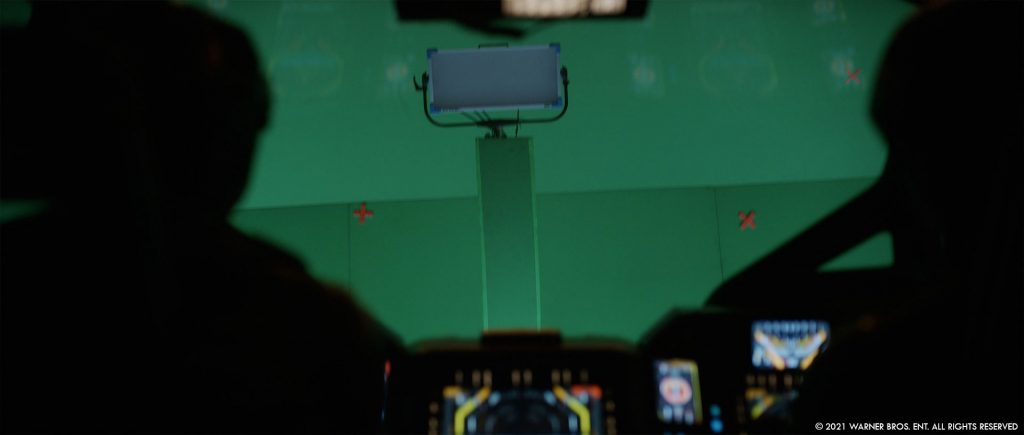
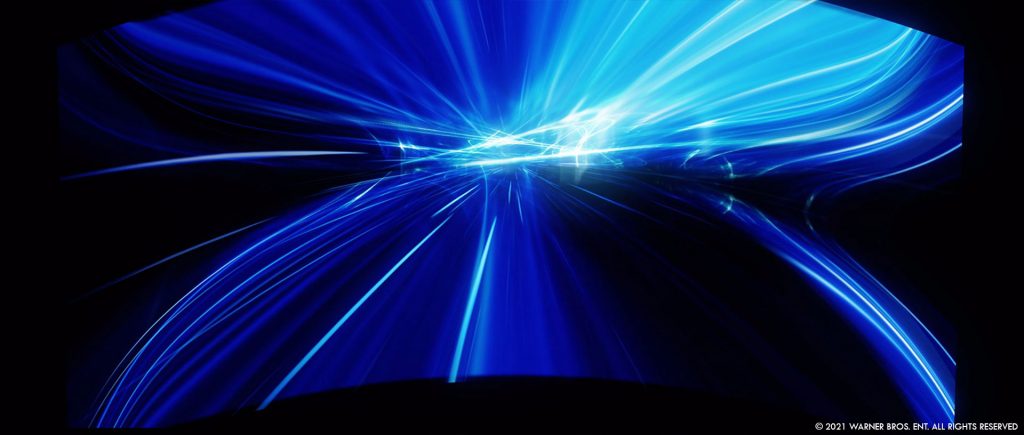
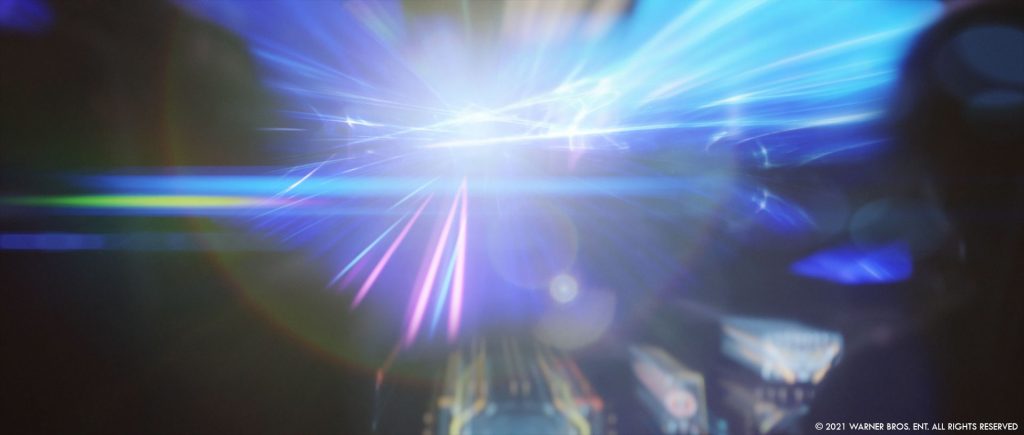
Which location was the most complicated to create and why?
It wasn’t one particular location as much as it was the entirety of Hollow Earth, and getting that to feel right in a way that enables the audience’s suspension of disbelief. There are just so many things that you’re fighting against there—the fact that it’s essentially a giant cave, that there are areas where gravity acts, let’s say, a tad unscientifically. I try to start every effect with the question, “what would it do in the real world?” but for Hollow Earth, that goes right out the window, and you’re left with “well, how can we make it interesting and pretty enough so that people won’t ask obvious questions like ‘wait, where does the light come from?’?”
That’s not to say we threw out the proverbial baby in the bathwater. We made a valiant attempt to put things on screen to help rationalise this crazy environment. Still, when all was said and done, we chose ‘cool’ over ‘any semblance of scientific accurracy’ every time. In the first wide shot of Hollow Earth as Kong falls, we establish the volcanic cloud over the temple as a source of light. Obviously, that wouldn’t work, but once we committed to it, we quit worrying about it and lit the shots as though there was a magic sun that let everything look as though it was vaguely outdoors, and we kept the ‘sun’ offscreen. Even though there were a couple of 180° pans that were trouble later, it seemed to work pretty well.
What’s the VFX shots count?
Weta worked on 253 shots.
What is your favourite shot or sequence?
There’s a shot of Kong running across a rocky landscape in Hollow Earth. As he runs by, a bunch of little crab guys scuttle about then settle back down, except one who is immediately eaten by a predator. It looks great, it came out really well, but really I love how much of a story it tells about Hollow Earth and where we are in just one shot.
What was the main challenge on this show, and how did you achieve it?
The balancing act between selling the scale of Kong while simultaneously treating him like an actor cinematographically was, for me, a huge challenge. I wish I could say there was a magic bullet we discovered that made everything just work. In reality, it was a constant balancing act between scale and performance.
Tricky question: are you more Godzilla or Kong?
Kong of course! It’s what we worked on, and I love to root for the underdog.
How long have you worked on this show?
From going to the shoot in Australia to delivery was about 15 months.
What is your next project?
Unfortunately, I’m not able to say.
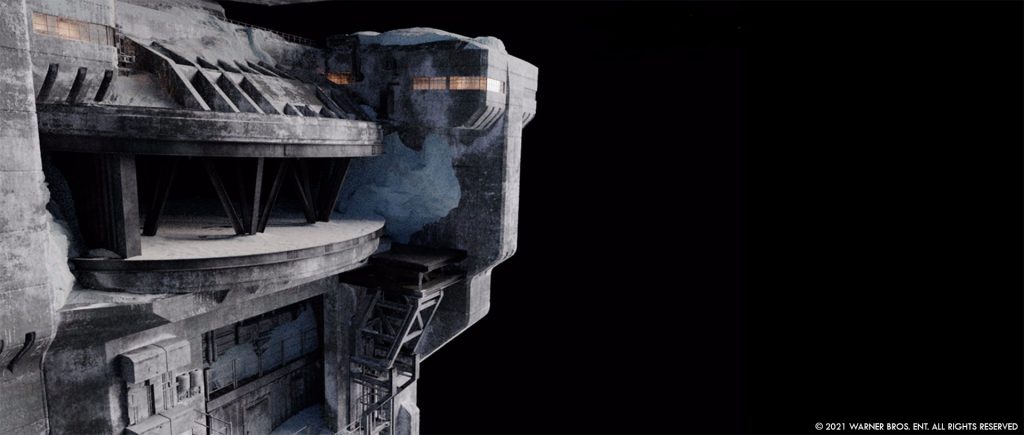
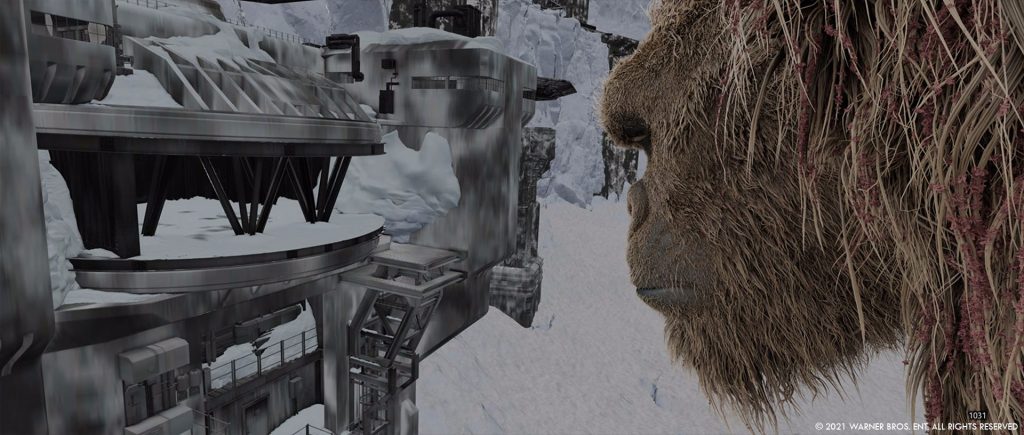
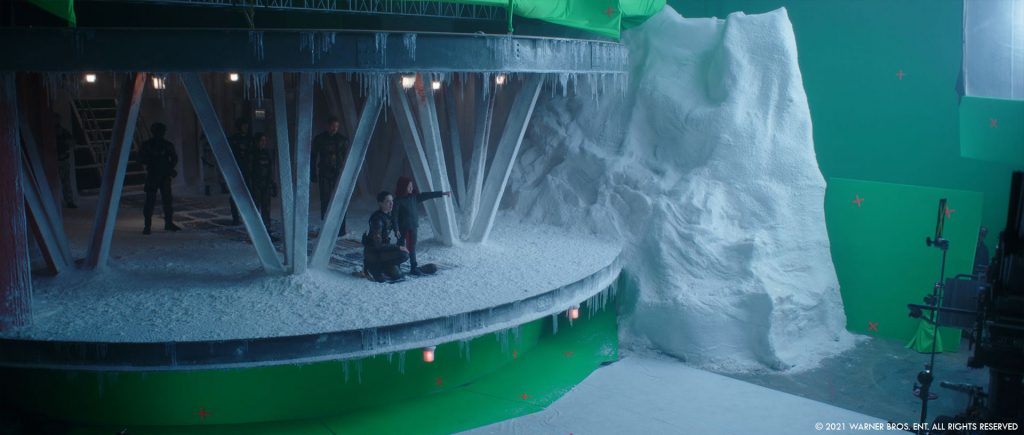
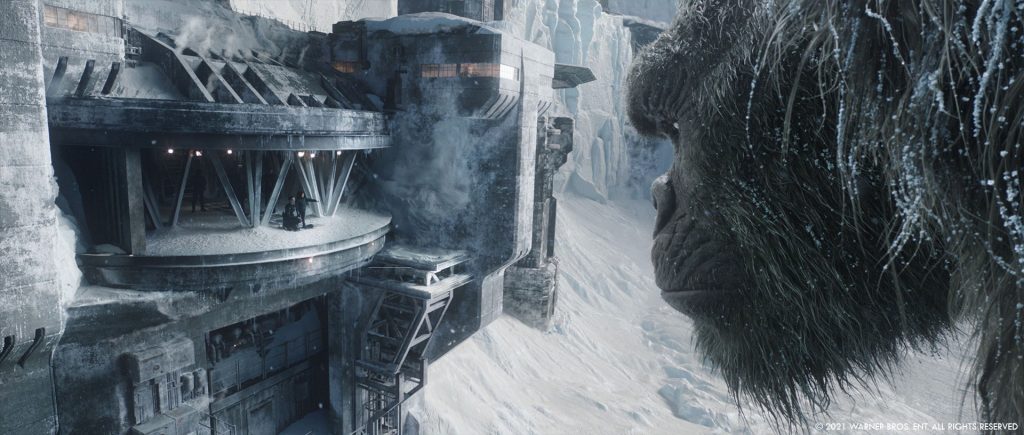
// Edwina Ting, Animation Lead
What kind of references and influences did you receive for the animation?
We received Previs from the client and took reference from the previous Kong movies. From this, we used our experience animating gorillas and monsters on our previous shows, such as Rampage and the Planet of the Apes trilogy, while also searching for motion of real-life creatures from videos.
You’ve dealt with characters of enormous size before, especially the animation – does it get easier or are there little tricks you learn to bridge the gap between real physics and “movie physics”?
It gets easier the more you do it—you learn what looks good and what feels right. Bigger creatures tend to have a larger mass, and it will take longer to stop their momentum once they get moving. One trick that I learnt for animating giant creatures is to put a generic human running alongside them to see if your monster is travelling at a suitable pace.
Kong is really emotional in some sequences. Can you elaborate about this aspect?
It’s always fun to find out more about your favourite monsters and their backstories. I believe Kong’s emotional journey highlights his intelligence and helps explain his willingness to compromise—even in a fight for dominance with Godzilla—to keep his new adoptive human family safe.
The Hollow Earth is full of creatures. Can you talk about the creative process there especially give some detail on the flying creature?
The client provides us with inspirational pictures and concepts. Our art department will find as much reference as possible and work up the details: limbs, skin, fur, eyes, everything! We sometimes manipulate a creatures musculature to make it feel more physically believable.
How did you choreograph the fights between Kong and the creatures?
The Nozuki fight choreography is based on Previs from the client. Through discussions between the supervisor and the team, we worked out how to build up the fight in a lively and convincing way while keeping Kong’s emotion in mind to help direct the action. Lots of references are gathered, ideas are bounced back and forth and sometimes acted out by the animators and mocap performers. Feedback from the client will also influence the choreography as they confirm whether the action portrays the story they are envisaging.
What is your favorite shot or sequence?
Besides the Nozuki fight that we worked on, I really enjoyed the other vendor’s first fight of Kong vs Godzilla in the water. I thought it was exciting to see him fighting out of his element.
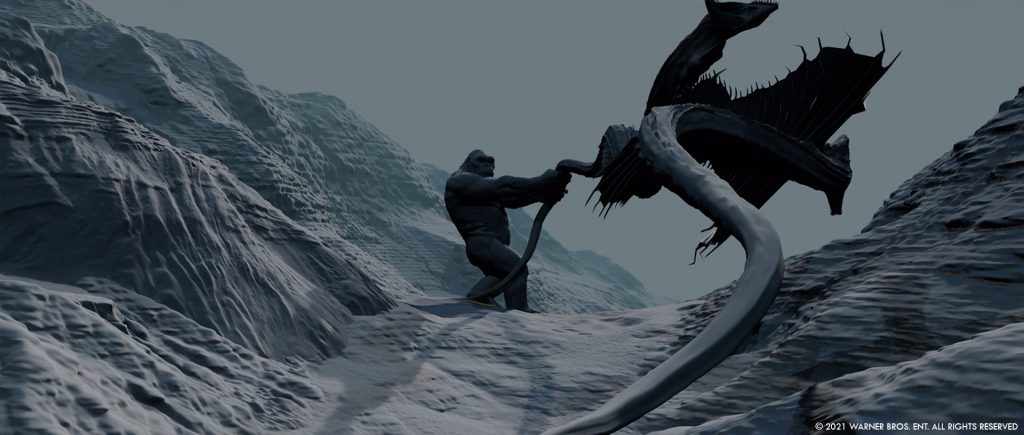
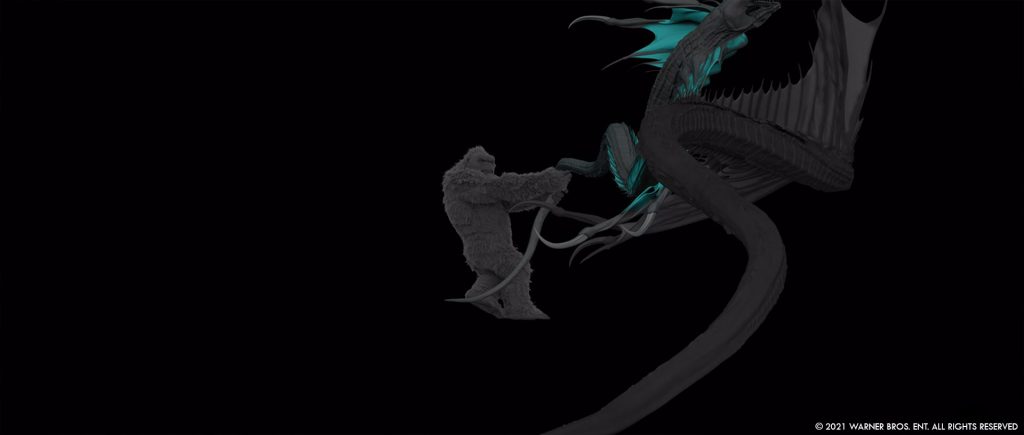
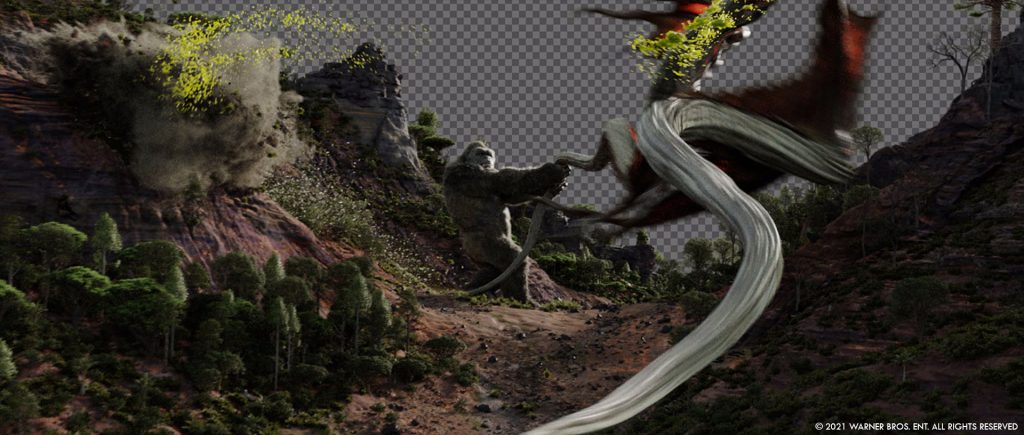
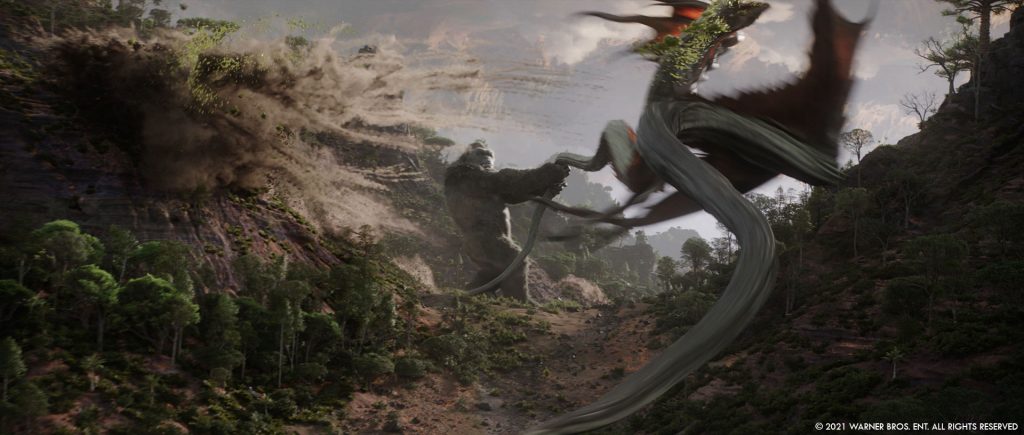
// Stephen Tong, CG Supervisor
At some point, the gravity is changing with Kong moving to one place to the other. How did you manage the camera so it felt natural and you never lost perspective of where you were?
The cameras and the design of the environment evolved quite a bit from the previs during post-production. Director Adam Wingard wanted the hill to look more like a cliff, with Kong standing on the edge of it and taking a leap of faith. We made the topside cliff much further away than depicted in the previs to emphasise the drama of the jump and to allow animation more space to create more compelling compositions for the shots.
Did you have much work to do on the fur and groom for Kong – any special challenges with the snow?
Scanline built the Kong asset and delivered us the ‘default’ variant. We ingested it into our pipeline and used it for 90% of our shots. For the Antarctica sequence where Kong has snow in his fur, we made a slightly damp groom. To account for Kong’s size, we made snow geometries very small and stuck huge tons onto the fur. It added an extra level of realism. We also placed additional FX snow chunks on the groom that could fall off when Kong moved.
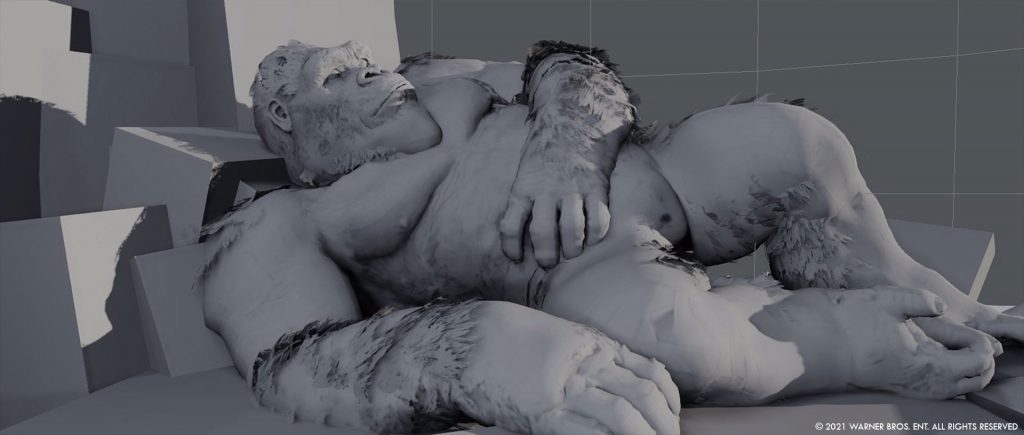
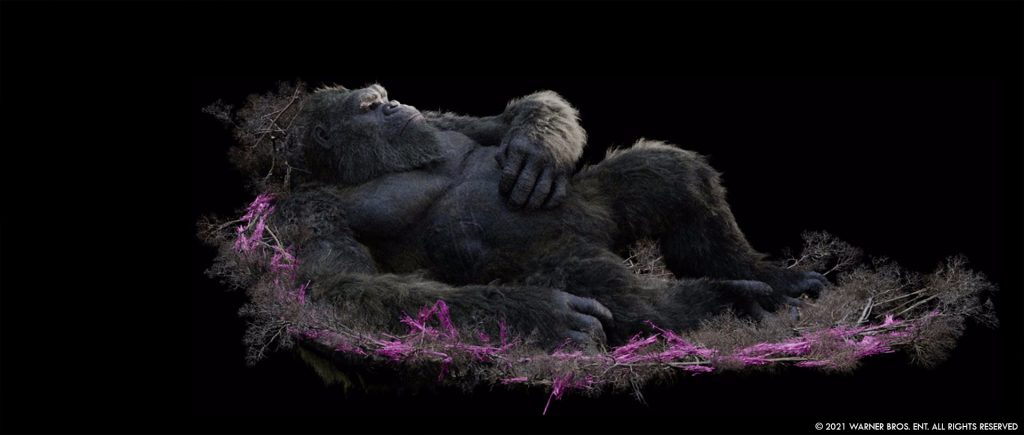
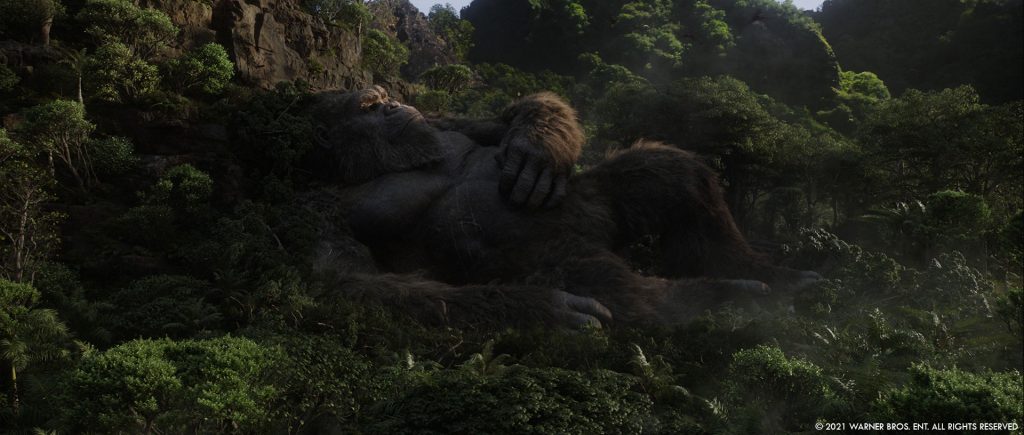
How long have you worked on this show?
About a year.
What is your next project?
A big thanks for your time.
WANT TO KNOW MORE?
Weta Digital: Dedicated page about Godzilla vs Kong on Weta Digital website.
© Vincent Frei – The Art of VFX – 2021




